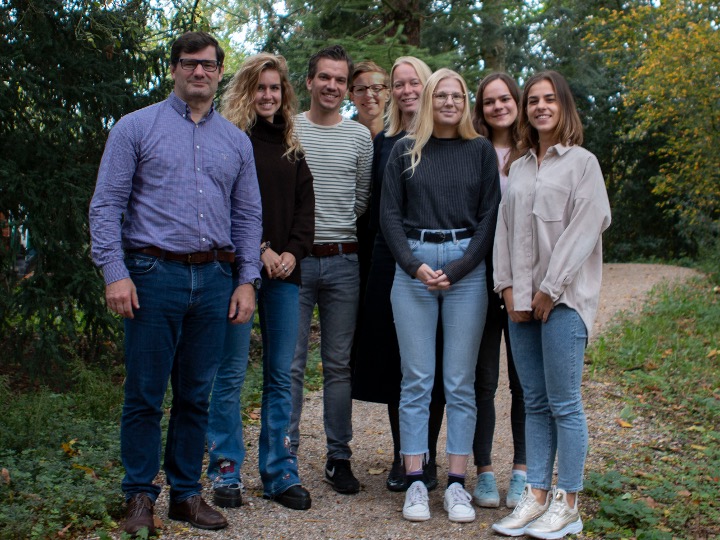
The value of connectedness in times of online learning
Note: This blogpost was written by Maria Uglvig and Nina Hansen, who are members of the Psychology Educational Committee.
On Thursday, March 12, the University of Groningen decided to close its doors for all activities, including teaching, effective immediately. Over the weekend that followed, courses and student supervision suddenly all moved online. Teachers invested amazing efforts and time to make this transition possible, while working from home and not knowing how this time will affect everyone’s lives. From their side, students were also unsure of the pandemic’s consequences. Many students, especially those coming from outside The Netherlands, decided to travel home to their families. Others decided to stay in Groningen.
Online teaching overnight
While our lives changed dramatically, University activities continued online. By Monday, March 16, teachers were prepared to go online and teach their last lectures of the block, but testing for large courses was not as easy to adjust to. To support students in these times, many offered additional online meetings and extended deadlines. Recording lectures at night when children finally slept suddenly became a common practice for many teachers. As members of the Educational Committee, we read all course evaluations and were impressed by the teachers’ creativity and engagement. Some teachers did their outmost best, but also had to invest more than the usual hours during the transition. Some teachers offered more contact moments to encourage their students and engage them in their learning – making online learning alone at home fun. Others used lecture recordings from last year.
Staying focused on their studies has been a challenge for many students. However, many expressed in a short survey that the move to online teaching helped structure the block and workload better. In particular, the new interactive/live lectures were deemed a success and the new focus on assignments was seen as a positive change. For example, Stephan Schleim changed the lectures to a podcast style and a weekly Q&A in his course “Theory of Science”. The multiple-choice exam became weekly assignments, consisting of open questions for groups to work on. Students mentioned that this enabled them to engage with content on a higher level.
From online to “hybrid” teaching
Recently, the Dutch government has started relaxing restrictions at local or neighborhood level. However, life at the University is unlikely to return to what it used to be, anytime soon. The doors are still closed and will only open slowly for some small-scale teaching. Teachers are now asked to think how to design their courses for the first semester, using hybrid forms of teaching if possible. Hybrid forms, but what does this mean? Lectures will continue to be online and only some small groups could occasionally meet in University buildings, if teachers feel safe to do this and social distancing measures can be followed. Master students will most likely be able to meet some of their fellow students and teachers. However, how will this work in the bachelor programs? This is currently still discussed by management and teachers. How would you as a student decide? Staying at home following online education (to save some money) or moving to Groningen to have the chance to possibly meet some students and teachers?
One thing is clear, at the moment many students feel left in the dark when it comes to what the implications of “hybrid teaching” will be for them. Overall, it seems that if hybrid teaching means meeting at the University once a week, then most prefer to stay online.
Longing and belonging
As seen from both the student and staff perspective, online teaching has been a positive experience for most, and many seem to not mind that it may carry on this way for another semester. However, our current students had already had the chance to get to know their fellow students before the pandemic changed everything; they knew their small group members with whom they were working hard on each assignment. Yet, from September onwards the reality will be different, and this presents yet another challenge. First-year students or new master students have not yet met their fellow peers. In this way, students’ needs are fundamentally different to the ones from the past few months. They long to meet fellow students, establish an academic and social network, and form connections with lecturers. But also, the seemingly smaller things. Sitting in the garden or canteen and enjoying a coffee, the impromptu meetings with friends and even teachers to discuss material, life, and anything else that may come up.
As a University, we want students to experience a sense of belonging, and inclusion, and students also long for this. So now, it’s our job to focus on how we can foster this through online teaching, or even “hybrid teaching”.
Suggestions to promote inclusion
- For each course, create the opportunity for collaborative work groups on the Nestor environment. Allowing students to meet people beyond that of their small-scale teaching, discuss things related to course, but also university life in general. It can be linked to that of a study group, or social group.
- Teacher office hours, online or in person. The University is a large institution, one that it feels easy to get lost in. Lecturers could provide these hours to form connections with students.
- Interactive lectures. Online lectures are fine, but only when they are interactive. Students do not want pre-recorded lectures, but they long for interaction, stimulation, and the ability to ask questions and partake in discussions. This allows students to feel part of something.
- Buddy programs: New students in previous years have been assigned buddies. Older students who help new students adjust, and often fosters a friendship between two people. We encourage this system to persist, it would provide new students a base someone who knows more than they do about student life, but is also in the same position as they are, as a student.
In the Educational Committee, we are discussing these issues and try to advise our director of teaching. To conclude, we strive to focus on the quality of the education but acknowledge that this quality is contingent on both students’ and staff’s well-being (the current overwork is worrisome!). Administrators/politicians/anyone may interpret online education often too opportunistically and may argue to stay here. This is not what we meant in this post. Teachers invested extraordinary efforts in these specific current times and that lessons learned might be useful in the future – but mostly online is not our aim. Developing means which promote feelings of belonging and inclusion for our students and sharing good practices of online teaching will hopefully help to develop suitable forms of hybrid teaching in this specific times – until the doors will open again for all!




Dear Maria and Nina,
Thank you so much for this highly informative and inspiring blog.
Best regards, Marieke